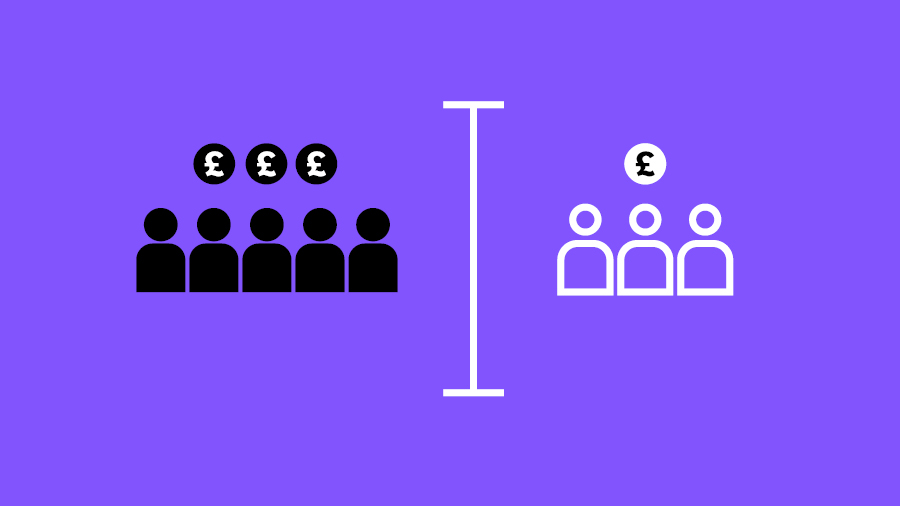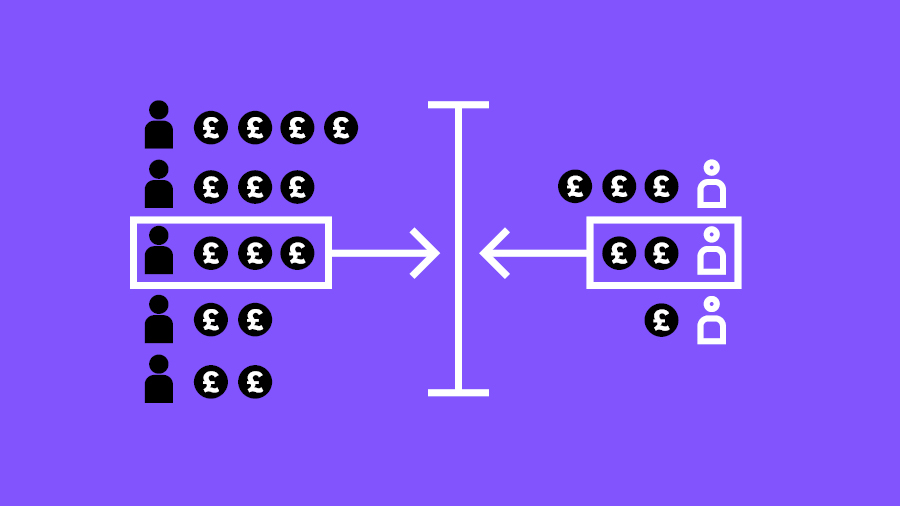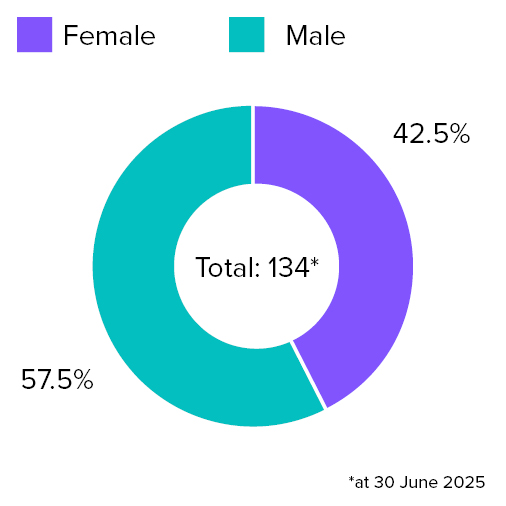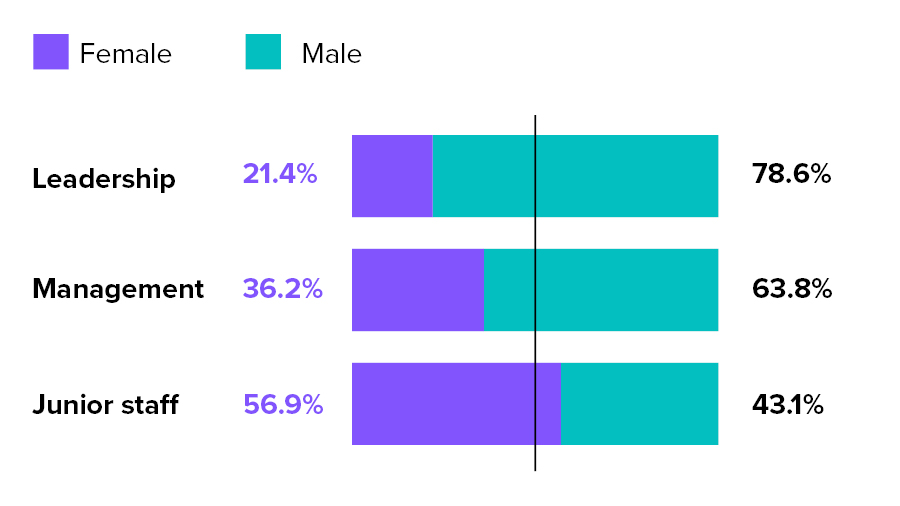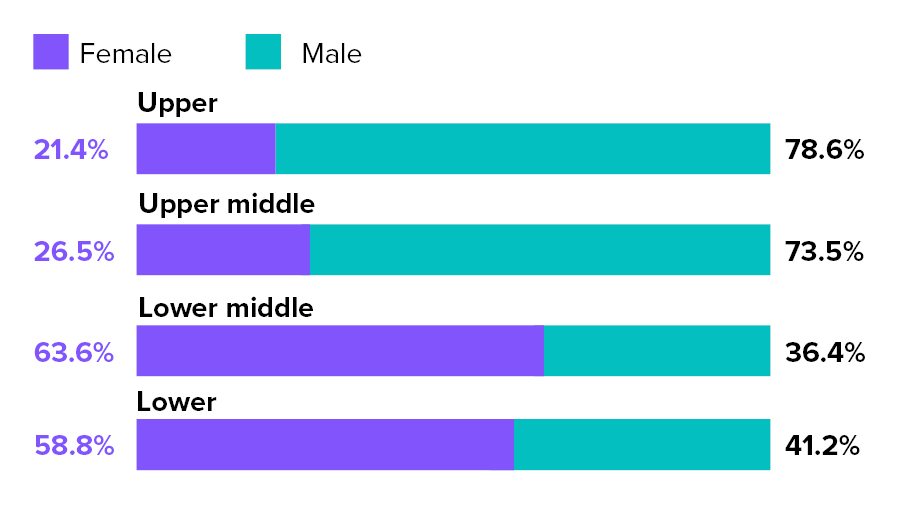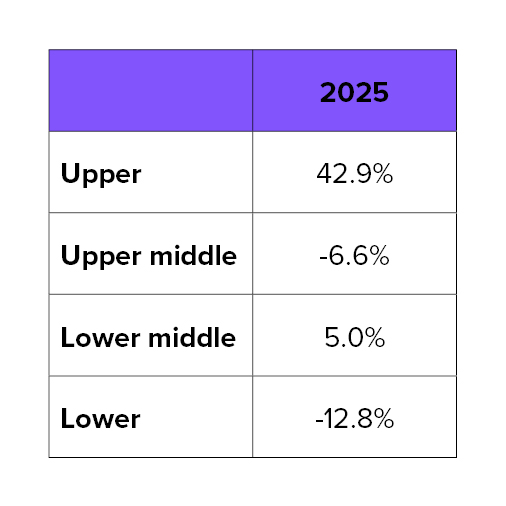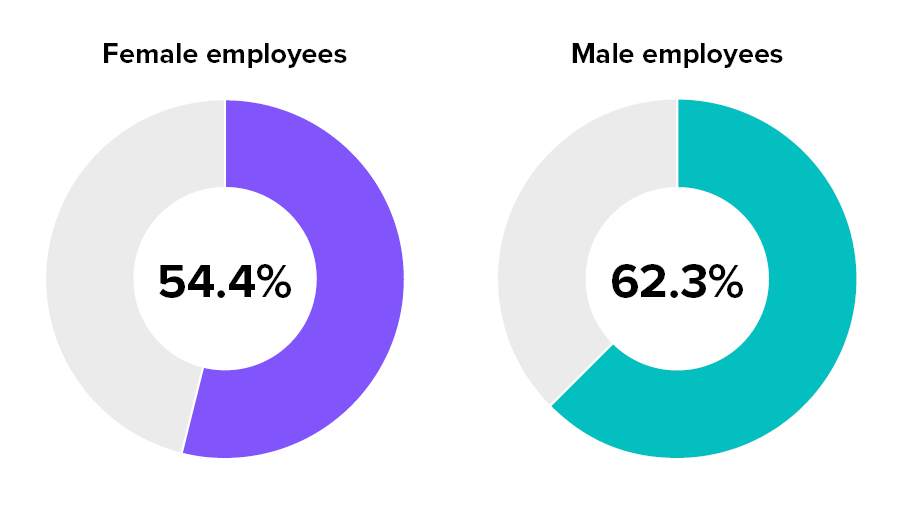Republic of Ireland gender pay gap report 2025

Foreword
Foreword
Equality, diversity and inclusion are fundamental to Mott MacDonald’s values and success. We believe that a diverse workforce isn’t just “nice to have” – it makes us more innovative, creative and effective in delivering solutions for our clients. By building a team that reflects the society we serve, we foster a workplace where everyone feels respected, valued and empowered to contribute their unique talents.
Publishing our gender pay gap data for the Republic of Ireland for the first time is an important step in holding ourselves accountable and driving progress. We have published this data in the UK for a number of years and this transparency about our pay gaps allows us to assess where we stand and better understand the root causes behind any disparities.
This first report for our business in the Republic of Ireland provides a baseline from which we will measure improvement. We are committed to analysing this data carefully and taking strong action to ensure all colleagues have equal opportunities to thrive.
The results this year show a significant gender pay gap in our Republic of Ireland operations – a median gap of 30.3% and a mean gap of 50.0%. However, this gap is not about men and women being paid differently for the same role; rather, it reflects the current structure of our workforce with a gender split of 38% female and 62% male. Women remain underrepresented in our most senior, higher-paying positions and over-represented in lower paid roles, which has a substantial impact on the average pay differences. Nonetheless, the team in Republic of Ireland is formed from a diverse group of people with 28 nationalities represented.
Our focus to deliver improvement on our gender pay gap in future years will be on targeted initiatives in recruitment, retention and career development to support and advance female talent. By continuing to build an inclusive culture and addressing the barriers that contribute to the pay gap, we aim to see year-on-year progress. Our leadership is dedicated to narrowing the gap and ensuring Mott MacDonald in the Republic of Ireland becomes a more diverse and equitable workplace for everyone.
These changes are critical in order to deliver on the country’s infrastructure commitments, which will require more than 22,300 additional engineers over the next decade. This growing demand highlights significant challenges, including how STEM education in the Republic of Ireland teaches and promotes. There is a need to address this talent shortage to avoid delay to infrastructure projects and hindering economic growth which could reduce Ireland’s competitiveness in attracting foreign investment.
Our commitment to ensuring that we continue to be transparent about our gender pay gap and the action we are taking to close it is important to both our growth and supporting the Republic of Ireland with its infrastructure investment plans.
By building a team that reflects the society we serve, we foster a workplace where everyone feels respected, valued and empowered to contribute their unique talents.
Country manager
Pay gap reporting terms explained
When looking at pay gap figures, it is important to remember there is a difference between equal pay and a pay gap.
Reporting populations
Mott MacDonald’s reporting is based on an employee population size of 134 on 30 June 2025, with a split of 42.5% female and 57.5% male.
Please note throughout this report, numbers have been rounded to one decimal place. Sometimes, this leads to what appear to be discrepancies in data. This is solely due to the limitations of rounding numbers and is not a result of inaccuracy.
How pay gaps are calculated and reported
The gender pay gap has been calculated using the government’s statutory methodology under the Gender Pay Gap Information Act 2021 and accompanying official guidance. Mott MacDonald’s reporting is based on pay after salary sacrifice, as required by statute. The reporting period is 1 July 2024 to 30 June 2025. The calculations follow government definitions for mean and median pay; bonus pay and the distribution of men and women across pay quartiles.
Note on gender reporting
Gender pay gap reporting is based on legal sex data. Although the terms “gender”, “male” and “female” are used for the purpose of this report, it is acknowledged that some people’s legal sex does not match their gender identity. Some people do not fit into binary gender and/or sex categories, including non-binary people and intersex people, and not all trans colleagues will hold a gender recognition certificate.
Although the requirement for reporting against legal sex may remain the same, Mott MacDonald has introduced a gender identity field within its HR system, which allows collection data on gender identities beyond male and female. Pending higher completion rates, this field will enable a better understanding of employee demographics and to report pay gaps internally on gender identity, as well as legal sex.
Gender pay gap and representation
Gender pay gap 2025
In 2025, Mott MacDonald’s Republic of Ireland business has a median gender pay gap of 30.3% and a mean gender pay gap of 50.0%. In other words, women’s average earnings are significantly lower than men’s. It is important to note that this is not an equal pay issue because we pay men and women the same for equivalent roles; instead, the gap is driven by the distribution of women and men across different levels of the organisation.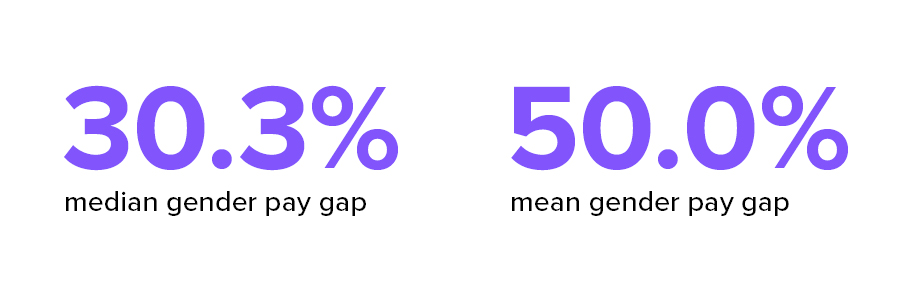
Men hold a larger share of the top-paying jobs and women are more represented in lower-paying jobs; as a result, the average pay for women is pulled down relative to men. Even small changes in a team of our size can influence the percentages and, with a relatively small employee population in Republic of Ireland at just over 130 people, minor variations in role composition or pay can have a noticeable impact on the percentage figures reported year to year.
A key factor behind this imbalance is the gender composition of the wider engineering talent pool in the Republic of Ireland. According to the Higher Education Authority, only around 25% of those studying engineering, manufacturing and construction courses are female and not all graduates from these courses go into engineering. The smaller pool of female graduates naturally limits the number of women entering the profession and progressing to senior positions.
Recruitment and progression trends also play a role. In recent years, most of our new hires have been in early-career grades, where we are seeing an encouraging increase in the proportion of women. However, at senior levels, the majority of staff have been with the business for more than 20 years and reflect the historic gender imbalances in the engineering workforce. Over time, as newer cohorts progress through the organisation, we expect this pattern to shift.
Nonetheless, the overall trend is clear: our gender pay gap is primarily driven by the underrepresentation of women in senior, higher-paid positions. To reduce the gender pay gap, we need to increase the representation of women at higher levels of the company. As we work toward a more balanced distribution of men and women across all grades, we expect to see the gap decrease over time.
The shape of the workforce
The shape of Mott MacDonald’s workforce significantly impacts its pay gaps. Based on the business’s internal grading structure, employees have been grouped into “junior staff”, “management” and “leadership”, as shown in the graph to the below.
Representation per quartile
Pay quartiles are used to show how the representation of female and male employees varies throughout the organisation. They are created by ordering the population based on hourly pay from lowest to highest and then dividing it into four equal groups.
Mean gender pay gap per quartile
Mott MacDonald’s gender pay gaps in the Republic of Ireland vary across quartiles. The gap is largest within the upper quartile, reflecting the lower representation of women in the most senior and highest-paid roles. While women are present in this quartile, men are more likely to occupy roles at the top end of the pay range, which increases the overall gap.
In contrast, the negative gaps in the upper-middle and lower quartiles show that women’s average pay is slightly higher than men’s in those groups. This pattern is influenced by the higher proportion of women in these levels and the narrower range of pay within them. Together these figures highlight that the gender pay gap is primarily driven by the concentration of men in senior, higher-paying roles.
Gender bonus gap
Percentage of male and female employees receiving bonuses
There are notable differences in both bonus pay and the rates at which bonuses and benefits are received by male and female employees in the Republic of Ireland.
Differences in bonus eligibility arise because a greater proportion of men currently occupy senior or longer-tenured roles that qualify for performance-related pay, while more women are in newer or junior positions that are not yet bonus-eligible. Bonus eligibility criteria is consistently applied across our Republic of Ireland and UK businesses with no difference in how bonuses are awarded between men and women in equivalent roles.
Bonus gaps
The overall bonus gap in the Republic of Ireland is influenced by these structural factors as well as the smaller size of the business with 134 employees. Small changes in individual roles, new hires or salary levels can create large shifts in percentage outcomes. As representation of women increases in senior and bonus-eligible positions, we expect the gap to narrow over time.
Percentage of male and female employees receiving benefit in kind
A higher proportion of men also received a benefit in kind, such as a car allowance or other perk. These differences largely reflect the structure of our workforce and historical benefit arrangements rather than unequal treatment. Car allowances, for example, were previously offered to higher-grade employees, many of whom have been with the business for over 20 years. For newer employees, this element is incorporated into base salary.
Addressing our pay gaps
Our pay gaps are largely due to the underrepresentation of female talent in our business, specifically in senior positions. Actions to close these gaps focus on:
- Attraction and recruitment
- Retention and engagement
- Development and progression.
Continuing our efforts to foster a supportive, respectful and inclusive environment while also building equality, diversity and inclusion (EDI) employee competencies will also help narrow existing pay gaps.
We are committed to improving gender representation and inclusion across all parts of our organisation. In the Republic of Ireland we are taking focused steps to address gender imbalance and build a more inclusive workplace for everyone. Our work begins with how we attract and hire talent. In the coming year, we will pilot our inclusive recruitment framework within our operations in the Republic of Ireland. This is part of our wider effort to ensure a fair and accessible recruitment experience. The framework introduces structured interviews, inclusive job descriptions and greater transparency across the hiring process. We will also continue strengthening our partnerships with outside organisations, such as the Association of Black and Minority Ethnic Engineers, to help us reach more diverse candidate pools and reduce potential barriers to entry.
We know that representation gaps start early, so we are working with schools and universities across the Republic of Ireland to support engagement in STEM subjects. Through targeted outreach and events with primary and secondary schools, we aim to inspire future careers in engineering and technology, which is key to building a more diverse talent pipeline over the long term.
As an example of this work, we support initiatives such as the Engineers Ireland STEPS programme which promotes engineering and targets students at primary and secondary schools across genders. In 2025, in Cork we have eight STEPS volunteers, seven of whom are female, who focus on promoting engineering to girls in schools.
Recruiting women into engineering consultancy roles also remains a wider industry challenge. The proportion of female graduates in engineering, manufacturing, and construction is currently around 25%, limiting the available pool of women entering the profession. As part of our growth strategy, we are targeting recruitment of junior staff and management roles where we are seeing increasing numbers of women joining the business. Over time, as these employees progress and become eligible for senior and bonus-linked roles, we expect to see further improvement in representation and a narrowing of the gender pay gap.
To support an inclusive culture within our Republic of Ireland offices, we plan to roll out inclusive behaviour training sessions for colleagues, with a focus on building awareness and confidence around everyday inclusion. People managers will continue to play a key role, supported by practical tools and guidance to lead diverse teams and foster inclusive environments.
We also recognise the importance of community. In the next 12 months, we will work to reinvigorate our local EDI network in Ireland. This will give colleagues a space to connect, share ideas and help shape inclusion activity locally. In addition, we will collaborate with our social impact team to identify opportunities where our inclusion goals align with community engagement, including support for gender equality and access in education.
Looking ahead, we will continue to ensure that colleagues in the Republic of Ireland benefit from access to our regional initiatives. This includes our Women in Leadership development programmes and inclusive learning resources all of which aim to support progression and build confidence at every career stage.
Together these actions form part of our long-term commitment to improving gender balance in the Republic of Ireland. By focusing on inclusive hiring, community engagement, education and leadership development, we are creating an environment where all colleagues – regardless of gender – can thrive.






